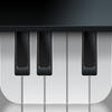Used iAudioTool for iOS?
Developer’s Description
By Julian Bunn
Explore More

Sponsored
Adobe Illustrator
FreeCapriccio Free - Ultimate Music Player
Free
Next Player
Paid
Piano Notes Treble - Sight Reading Tutor
Free
Nuclear Blast
Free
Theremin (Motion Sensors and Touch Screen)
Free
Jackie
Free
The Wave
Free
LiveTrax Pro
Paid
Bongo Flava Music Radio Recorder
Free
Touch Piano! (FREE)
FreeMixPad Offline
Free